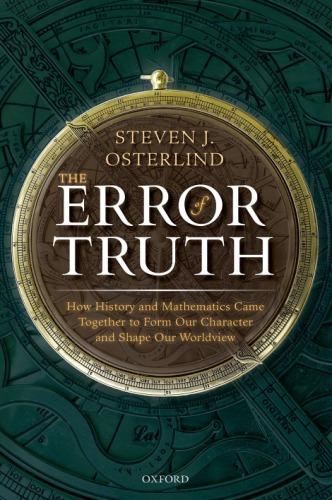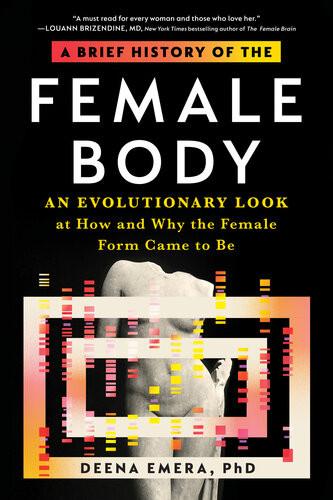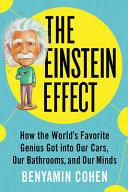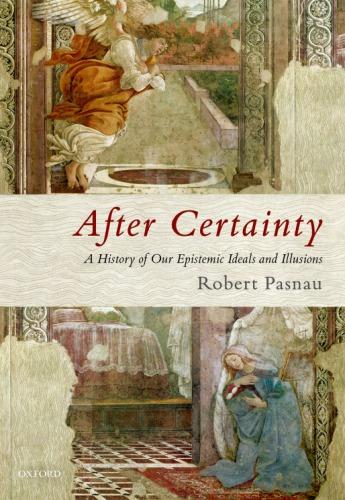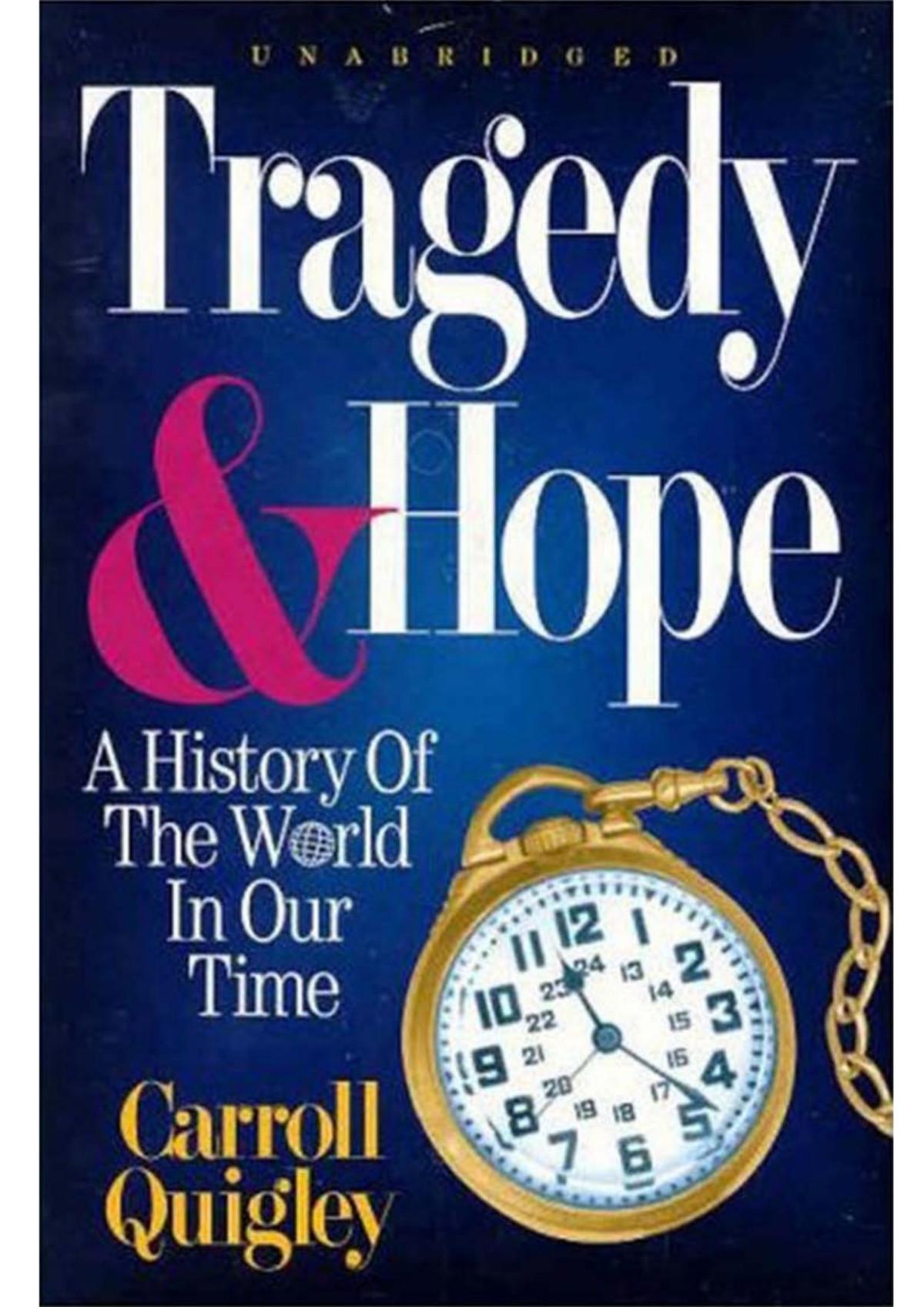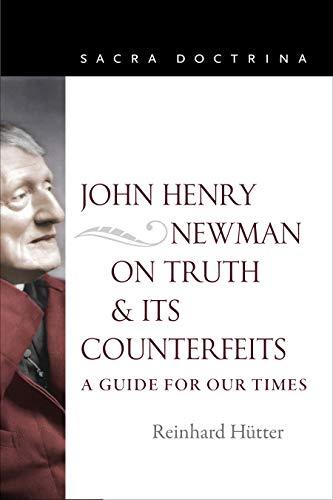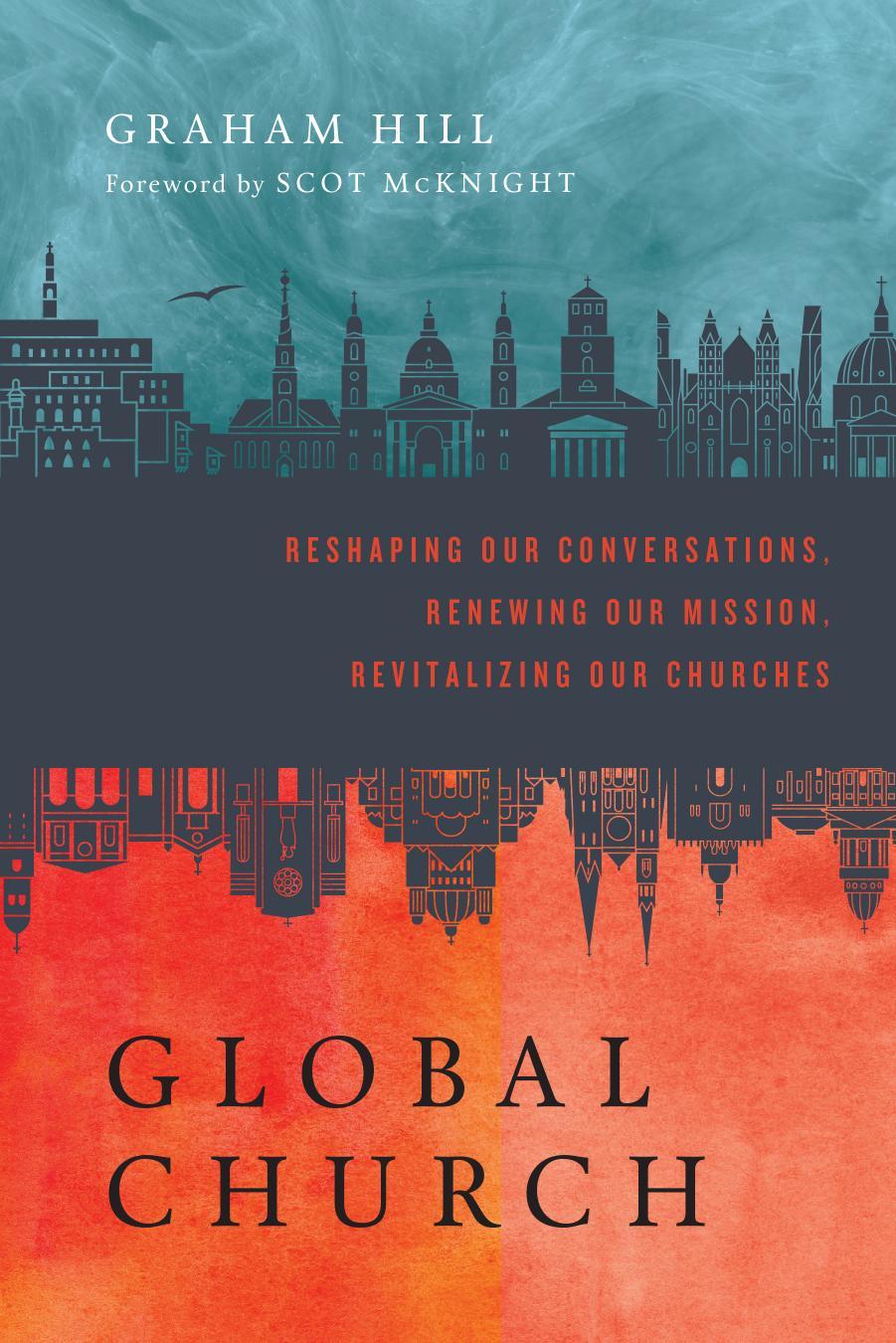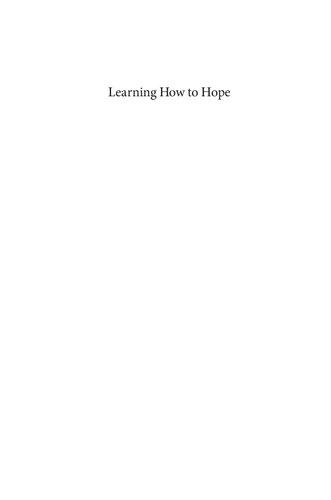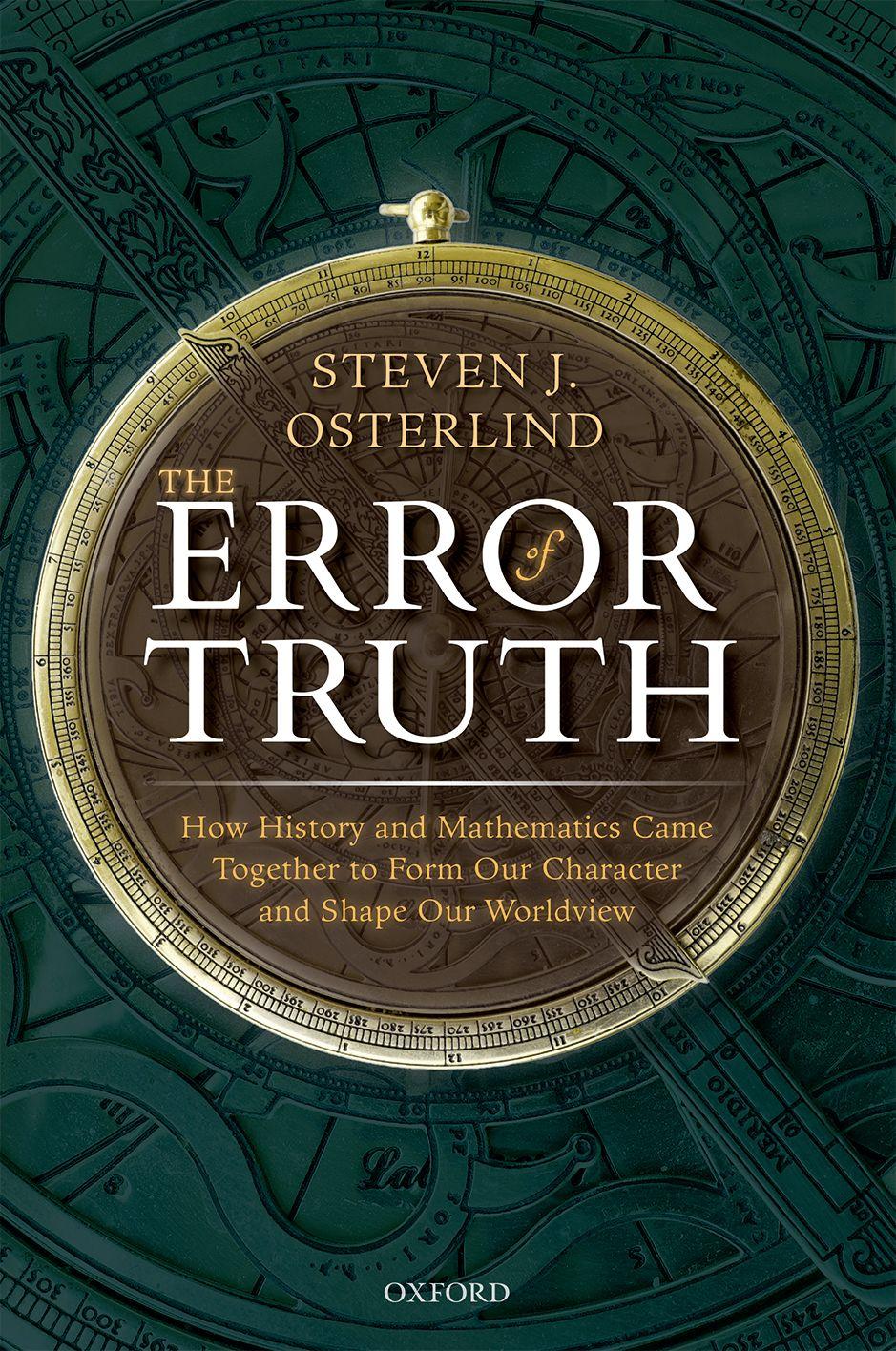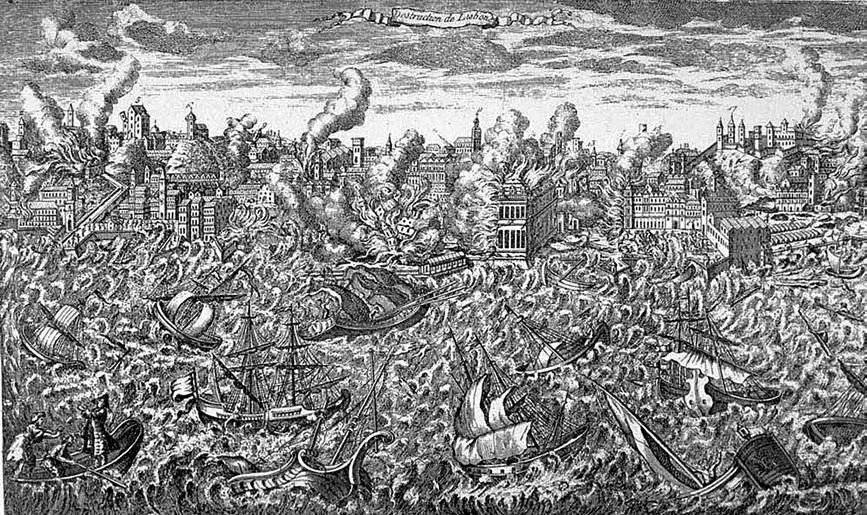The Remarkable Story
This is the story of a remarkable idea that has shaped humankind beyond the scope of any single historical event or clever invention. It recounts the astonishing and unexpected tale of how quantitative thinking was invented and rose to primacy in our lives in the nineteenth and early twentieth centuries, bringing us to an entirely new perspective on what we know about the world and how we know it—even on what we each think about ourselves: our very nature and identity. The widespread and lasting effect of thinking quantitatively is truly that profound.
Quantitative thinking, at its essence, is merely but mightily our inclination to view natural and everyday phenomena through a lens of measurable events: from anticipating the day’s weather, to feeling confident that medications will do their job, to sleeping soundly about investments, to being calm when boarding a plane, as well as thousands of routine and not-so-ordinary happenings in our lives. The uncertainty for all kinds of events, previously thought to be random, providential, or unknowable, is now vastly reduced because of our thinking quantitatively.
“Quantification” is the noun I use for quantitative thinking and its concomitant worldview. It implies a level of rational thought and decision-making that is forward-looking since outcomes can be anticipated with more certainty than ever before. Consequently—and significantly—with quantification, we need not impulsively react after something has happened. No longer do we perceive ourselves as beings who are at the whim of fate or providence or who do things because “That’s the way it’s always been,” with a resigned “That’s what happens.” With this new viewpoint, we live with an internal sense of odds and probability. Quantification is our moment-by-moment reality.
The Error of Truth. Steven J. Osterlind. Oxford University Press (2019). © Steven J. Osterlind 2019. DOI: 10.1093/oso/9780198831600.001.0001
There is a kind of freedom born from all the new choices available to us. It allows people to choose daily and long-term actions among alternatives, knowing the likelihood of a desired result. No longer is impulse or habit our only choice for action. From our quantitatively informed viewpoint, we can take meaningful, advantageous action beforehand. We react to events in new ways and interact with others differently. We are more attentive to predictive markers, as risk is gauged in our brains instantaneously. Uncertainty in outcome still exists, but now it is evaluated. We are more confident in our decisions, less doubtful.
Moreover, with quantification, we have even reformed our assessment of what we previously thought to be unbending fact. The new quantitative thinking has caused us to challenge the veracity of what was once believed to be factual, accurate, and faithful to observation. Everything we know changed because we see everything differently. That is, quantification altered our conception of reality and what is, for us, true—indeed, the Truth. The change in outlook brings an inconsistency or a kind of inaccuracy to our formerly known Truth. As a philosophical conceit, it is an error of Truth. We explore this thought in detail as we go along. In fact, this epistemological shift is interesting to trace.
The new viewpoint—summarized as “quantification”—came into being because of a momentous human achievement: namely, we learned how to measure uncertainty, a direct consequence of the invention and development of the science of probability. For the first time in history, using the methods of probability theory, we can anticipate an outcome for almost any event or phenomenon. For all kinds of things, we can describe odds and the likelihood of occurrence. By calculating correlational relationships, we understand much better how things go together.
Amazingly (yet seemingly now commonplace), with probability we can even make calculations for occurrences of events that have not yet happened: reliable predictions. For instance, we can track hurricanes and forecast their likely direction, anticipate longevity for patients with cancer, and expect particular sales outcomes based on how resources are allocated. Even planned military campaigns can be strategically evaluated in terms of their likelihood of success. Knowing the odds of an outcome is quite ordinary to us today, but it was not always so.
The science of probability has not just increased our understanding of how things work and brought to us the “odds,” as if to a gambler. It has fundamentally changed our lives, in both fact and outlook. Because of it, we process information differently and hold mental pictures unlike those held by previous generations. At last, with mathematical precision, we understand much about
ourselves and our surroundings that was previously unknown. For instance, because of probability, we know how our behavior and food intake relates to general health, even to specific diseases like diabetes; how school attendance and a student’s motivation affect their achievement and opportunities for many years thereafter; or how neighborhood planning is related to humans’ interactions.
Most modern electronic devices stem directly from developments in probability theory. The things with which we routinely interact in our daily activities— such as cars, TV sets, refrigerators, smartphones, notebooks, hearing aids, and heart defibrillators—work via the circuitry of their microchips. The binary logic of such circuitry can be traced directly to developments in probability theory. The same is true for the “Bayesian thinking” of artificial intelligence (commonly known as AI), where it formulates a response based on some input (such as with a virtual assistant like Apple’s Siri or Microsoft’s Cortana, both of which respond to voice commands). These Bayesian “estimations” (as they are called) are an invention of probability theory. Spam filters employ Bayesian estimation. The calculations necessary for such electromechanical reasonings have their foundation in probability theory.
Further, many things we routinely do as an unremarkable daily activity are the direct consequence of probability in our lives. For instance, the mathematical algorithms used to reliably move money between financial institutions (including credit card companies) find their basis in probability assumptions. And a Sudoku puzzle’s solution is a Latin square of Fisher’s devising. Machine learning and predictive analytics are also forms of knowledge that directly result from probability theory. For an especially prominent example, consider AI’s momentous advance in recent years. With AI’s “superintelligences,” there is now the capacity for a machine to “learn” and even evolve its knowledge from its own learning. AI is Bayesian thinking in action. AI is also the very heart of control systems for the autopilot mode in airplanes. All of this is due to the invention of the methods of probability.
Throughout this book, we will see many instances like these, where the work of probability theory is now alive in our daily life. But—significantly—this book is not a mere recounting of developments in probability theory. Rather, it is a story about us: how we came to be who we are and how we adopted a quantified worldview.
Most of the events of this story happened during a relatively short time frame in world history, a period that brought forth a torrent of breathtaking advancements in mathematics and statistics (the science of making inferences), and, in particular, the ability to measure uncertainty through the developments of
probability theory. It presented a cavalcade of new information. The momentous mathematical advances arguably eclipsed such achievements at any other time in history. At first, these were technical accomplishments focused on astronomy and geodesy (i.e., mapping distances across countries or the globe), but soon there arose new fields of activity altogether, particularly for applications of statistics and the quickly developing theory of probability.
Further—and especially relevant to our story—is the fact that these mathematical inventions, discoveries, and developments happened because they could happen—and not as the result of randomness in the universe. In all regards— social, cultural, political, educational, and even religious—the time was ripe, and right, for intellectual action, with the activity being spurred on by a number of momentous historical events. The 130 years or so in which our story occurs are generally acknowledged to be the most productive in human history, eclipsing all others up to then. During our period, Western societies made significant and innovative advances in virtually all fields of knowledge: medicine, engineering, business, economics, and education, as well as the literary and performing arts. History gave a kind of tacit assent to the quantitative developments—with profound effect.
Three specific historical events gave impetus to quantification. They are (1) the mid and late periods of the Enlightenment and its rationalism (as we see in a bit, the Enlightenment is often divided into three periods); (2) the fall of the European monarchies as a result of the French Revolution, which was caused by the Enlightenment and had an impact far beyond the borders of France, and (3) the Industrial Revolution, both the “First Industrial Revolution” in England and its re-emergence in America as the “Second Industrial Revolution.” These things gave a context in which quantification could develop. Their meaning derives from their context. In a very real sense, understanding the times is prerequisite to understanding the phenomena of quantification.
Of course, in practice, we almost never think about actually assessing the odds by employing the statistical methods needed to make such predictions. Obviously, few of us have the training or the inclination to make those calculations. But, with quantitative thinking as our outlook, we do routinely imagine that these events are calculable in some way or another. Picturing daily events as having calculable underpinnings is so routine in our lives that we scarcely give it a second thought. Yet, what is ordinary to us now, was relatively new then—undreamed of by previous generations.
It is easy to appreciate that the new knowledge of predicting things with reasonable accuracy resulted in our altering our behavior, but the realization that
this new ability has changed us at our core, far beyond actions we have taken in and of themselves, is startling. It has fundamentally transformed what we know about the world, and even what we think of ourselves, into something entirely new, giving us a quantitative perspective on all things. It’s an epic shift in thinking. Yet, few recognize the complete transformation in natural outlook for what it is. Its perspicacity is stunningly subtle and eludes recognition unless intentionally examined. An entire populace changed . . . and did not even recognize the shift in their thinking until it was so fully incorporated into their daily lives as to seem ordinary. This was an astounding metamorphosis. It is akin to a toddler learning to speak for the first time—speech advances so simply and subtly that the child does not recognize his own learning until it is done. So, too, was it with quantitative thinking.
Further, as potent as was the influence of quantitative thinking on forming our worldview, the story of its invention and settling into our neural pathways grows more stunning when we learn that the formal methods of quantitative analysis—the measurement of uncertainty—stem from the work of a very few men and women (fewer than about fifty principals), each of almost unimaginably high intellect and most working in about the same time period, roughly from the early 1800s to about 1930. Many of the major characters knew one another personally or at least were aware of the others’ corresponding work in probability theory or statistics, and more broadly in mathematics. Yet, aside from knowing one another and their reputation in intellectual circles, most of these individuals worked in relative obscurity and were not popularly known. Even today, most of these individuals are still not well known, except to biographers and scholars. But, as we shall see, their influence on us today is nothing short of astounding. In large part, this is what makes the story of quantification so interesting.
I will not list all of these individuals now because we meet them later on; but, to give a taste of what is to come, some prominent figures include Jacob Bernoulli, Thomas Bayes, Adrien-Marie Legendre, Carl Gauss, Pierre-Simon Laplace, Sir Francis Galton, Karl Pearson, Sir Ronald Fisher, and Albert Einstein. And just as important to our story are certain others who worked outside of mathematics and probability theory but still played a role in the story of quantification. These individuals are likely familiar to you but you may not have expected them to be included here—people like Benjamin Franklin, Wolfgang Amadeus Mozart, and even the poet–philosopher Dr. Samuel Johnson. As we go along, I mention others, too: politicians, composers, economists, and the like. My reason for including a given person at all is that he or she
contributed to the story of quantification. Our story has a single focus, which was brought to us by many persons of varied backgrounds.
To state the obvious, this story could be expanded to include many other important people, adding to my selection the minor players and yet more who may have influenced the major contributors. But to include them all would make this book so big as to fill the Long Room at Trinity College, Dublin (a wonderful multistory, musty Harry Potter-ish room that is a huge repository of renowned classic works, including some surviving pages from the Celtic Book of Kells). I limit my selection to those whose accomplishments have had the greatest influence on quantification. And, of course, scholarship is not an insular activity; all the characters of this story had their own individual influencers. I mention some of their predecessors—from Newton to Einstein— along the way when they add to our story.
Contrast a transformed outlook for ordinary people with that held even in the century just before quantification (roughly, the eighteenth century). Although many folks lived routine and often orderly lives, the world was a tumultuous place rife with unknowable events that demanded an after-the-fact reaction. During this time, rulers (often monarchs and despots) made decisions that had direct and often daily impact. Queen Victoria, Napoleon Bonaparte, and Peter the Great were never far from people’s thoughts as, seemingly, their every whim was consequential and beyond any control. The influence of the church, and particularly that of the local priest, was also profound and directed people’s daily actions to a degree that, today, most would find unacceptable. Ordinary folks had no alternative but to react to what was happening around them—and, accordingly, their mindset was one of responding to events rather than anticipating them and making informed choices beforehand.
Especially when experiencing natural phenomena, the common belief was that things were directed by an unpredictable god and that anticipating them ahead of time was impossible. One natural event in particular was widely viewed as both the literal and the symbolic manifestation of this view: the Great Lisbon Earthquake of 1755. The full tragedy was actually composed of three related disasters: the earthquake itself; a devastating tsunami, which followed forty minutes later; and then a number of small fires that merged into a horrifying, citywide firestorm which lasted for weeks. All told, perhaps as many as 100,000 souls lost their lives in the catastrophe—about half the population of the city and its environs.
On Saturday morning, November 1, nearly everyone in Lisbon was in church for All Saints’ Day. Lighted candles of commemoration were everywhere. People
were likely listening to a sermon or sitting in quiet reverence, when suddenly there was an upset. The shaking came first to their feet, then moved up from the floor to their seats; next, it came to the building itself. People stood up and looked about with uncomprehending anxiety. It took a lifetime of seconds to realize that this was an earthquake. It lasted six minutes. Its intensity has been estimated to have been, at today’s Richter magnitude scale, 8.5 to 9.0. As the buildings and houses began to crumble around them, individuals screamed and tried to find an exit. Utter panic ensued.
Amid the confusion, people had what seemed to be a rational reaction: run outside, away from the toppling buildings and toward the harbor, a large area without buildings or structures. Lisbon is located in a shallow, bowl-shaped valley that opens on one side to the sea. The shaking finally stopped, and everyone began to take stock of the devastation, doubtless looking for their loved ones. As the minutes passed, more and more people arrived in the open city center, near the harbor. Chaos still reigned, but, gradually, pockets of calm began to emerge here and there.
Then, a full forty minutes later, something happened that was yet more unthinkable: a colossal wall of water, estimated to have been from forty- to onehundred-feet high, rolled in from the sea. A tsunami roared upon them, pushing back into Lisbon all the ships in the harbor, together with sand, mud, and all the pieces of the collapsed buildings, relentlessly sweeping the earthquake survivors back into the rubble of the fallen churches and buildings. Everything was moving. When the tsunami’s surge reached the far side of Lisbon, it turned around and receded back to the sea, this time pulling debris and bodies along with it. Sea captains later reported seeing hundreds of floating bodies and wreckage dozens of miles offshore.
Next, the fires came. A million All Saints’ Day candles ignited the wood sticks of the broken structures. Small fires, looking for oxygen, drew the winds from the valley’s sides downward until the small fires grew into a citywide firestorm. Lisbon was now a single huge conflagration. The fire continued for weeks. It was like a scene from Dante’s Inferno. Figure 1.1 is a copper engraving of the Great Lisbon Earthquake, showing the city in flames, and a tsunami overwhelming the ships in the harbor.
News of the Great Lisbon Earthquake quickly spread across the Western world. Everyone felt its effects. One wide-ranging consequence was that it caused people to think about their place in the world. Questions of theodicy (why a good god would allow evil) formed a major topic of discussion, not only for philosophers and clergymen but for everyone. Other questions arose, too,
with much ensuing discussion. One such area for concern was whether there was anything that could have been done to help such a situation. Of course, people realized that no one could forestall an earthquake, but they did begin to question their perspective—not only on natural phenomena but on their internal thoughts. If one’s worldview could be more based on understanding rather than reacting, one would gain a certain sense of internal control.
As we see in our story of quantification, the momentous developments in probability theory—the measurement of uncertainty—came into people’s lives at this time, affecting their whole lives—soul, mind, and spirit. With this, it seemed, people gained a kind of cognitive refuge in which to place their rational thoughts. Influenced by the philosophy of David Hume and John Locke, people tried to employ their reasoning powers to understand and deal with the natural world. Certainly, with quantifying techniques at hand, something could be known about the future; it might be possible to reasonably anticipate the likely outcome of events—both ordinary ones and extraordinary ones.
The Great Lisbon Earthquake is thus often cited as giving impetus to the Enlightenment period (the Age of Reason) that followed, a time when many events in our story occurred.
Clearly, quantification contributed to a changed everything. With it, people saw that they were in control of their lives to a much greater degree than before because, in this new epoch, events could be measured, scaled, empirically
Figure 1.1 Copper engraving of The Great Lisbon Earthquake (Source: http://commons.wikimedia.org/wiki/Category:Public_domain)
analyzed, and often anticipated. No longer were people destined to react to events only afterward. All kinds of dangers, pitfalls, and unfortunate trials could be knowingly avoided. With quantification, one sees the world as controllable, to a degree previously unknown in human history. The social, cultural, political, and scientific realms aligned in importance to enable this new mindset—the mindset we hold today.
Hence, in a nutshell, this book tells an interesting story about some extraordinary people and the truly profound consequence of their work. We explore how they developed the methods of measuring uncertainty and how that (in its historical context) brought quantification to the fore for everyone, everywhere—and, particularly, how, as a result, we came to a changed perspective on what we know about the world and what we think of ourselves.
The German language has an especially apt word that captures what happened to our outlook by this reformation of modern thought. The word is Weltanschauung, meaning “a worldview,” denoting the way a person looks at the phenomenon of life as a whole. The noun implies more than its literal translation. A Weltanschauung is also an internal sense of self. It shapes all that is seen by giving a guiding perspective to the senses. The lens and filters that we employ in taking in and interpreting sensory input constitute the crucial heart of a Weltanschauung
Grammatically, the term is a contraction of Welt (worldwide) and anschauen (to look at), implying concentrated attention and discernment. It is more thought-provoking than the simple German word blicken (to see). There is a depth to the word anschauen.
While the word Weltanschauung may appear officious or pompous when used as common English, it is preferred in educational conversation over the simple term “worldview” because it conveys a more comprehensive idea. The Oxford English Dictionary cites many examples, both historical and contemporary, of using Weltanschauung in context.
In this book, we see, by the introduction of one noteworthy idea—namely, quantification—how humankind came to a new Weltanschauung. This kind of transformation of a worldview—what we know about the world and what we think of ourselves—is very rare in human history, but it has happened before. One such occurrence was in late medieval times when Copernicus published his work on a heliocentric (sun-centered) universe. He posited (with mathematical calculation) that the earth revolves around the sun, thus challenging the understanding of a Ptolemaic universe where Earth is the central and
principal object in the universe, a view held as impossible to deny by the Roman Catholic Church.
The prior truth was eventually transmuted and held to be in error. Copernicus’s discovery evolved humankind’s thinking about what is known about the world, encompassing even what we think of ourselves. This Copernican revolution was just like the change experienced with the switch to quantitative thinking in the nineteenth and early twentieth centuries: a fresh Weltanschauung. It was, indeed, a rare event in history.
Copernicus’s work changed people’s thinking, but it is useful to realize that a restructured worldview does not appear with every discovery or invention— even the great ones with a profound effect all their own. The difference between making a new discovery or invention and changing one’s worldview is the difference between advancing knowledge, on the one hand, and embracing a new perspective on what is true or real in our daily lives, on the other. It is a qualitative distinction.
Most discoveries and inventions fall into the former category; that is, they extend our knowledge and often make us change the way we do things, but they do not alter our way of thinking to a degree that modifies our understanding of everything around us. We may change our daily behavior, but we do not alter our view of the world. Typically, new inventions and discoveries offer a route to make our lives safer or more comfortable, or somehow better. Many are significant, of course, but our general viewpoint remains unchanged.
To understand this point, contrast Copernicus’s work with Louis Pasteur’s experiments on the relationship between germs and disease in the late nineteenth century. Pasteur momentously advanced our understanding in medicine, and his discoveries changed how diseases were treated, making cures and medical management vastly more effective. Today, as a direct result of Pasteur’s studies, we understand that diseases are caused by germ-based pathogens, such as bacteria or viruses. Doubtless, his work improved lives and has saved millions of people. But Pasteur did not bring about a new way of thinking. His work advanced medicine so much that we even changed our behavior so as to avoid harmful germs and bacteria, but he did not cause the paradigm shift of a reformed Weltanschauung. In contrast, Copernicus’s ideas did transform our thinking.
The new quantitative perspective applies to humankind generally—both the illiterate person and the person with many years of schooling—as well as those with talents of all forms: writers, artists, musicians, craftspeople, academics, athletes, businesspeople, and the many who simply survive daily trials by their street smarts. We act as a community in changing a worldview. Accordingly, the
quantification of our lives is due to neither geography, nor language, nor ethnicity. In our story, these are not, in and of themselves, determinants.
And, of course, evolving to our quantitative viewpoint is not the result of many more people simply learning about quantifiable subjects, or more people studying statistical methods or probability theory. That did not happen. Taken as a whole, there was no increase in the number of people learning the newly developed methods of probability theory. After all, most people do not know many things explicitly mathematical, nor do they overtly care. They are simply, but meaningfully, going about their daily lives. At most, they likely use simple arithmetic only occasionally—say, at a restaurant when viewing the bill or when figuring the taxes they owe.
You may remember the classic 1986 Francis Ford Coppola movie Peggy Sue Got Married. In it, a thirty-something woman is magically transported back to her high school, where the exasperated math teacher implores the unmotivated students to study their algebra assignment. Kathleen Turner turns to her much younger classmates (they see her only as another student their own age) and says, “You can forget this. Trust me. You’ll never use it!” In a literal sense, she is right. But the fact of not knowing mathematics is different from having a quantitative perspective on the world. Clearly, then, the tale of how an entire population came to quantitative thinking is not explained by suggesting that a large, new group of people somehow learned more math than they had previously known. Regardless, as we shall see in our story, their view of the world has been informed by a quantitative outlook on daily events—as a community, their worldview is now different from what they had before.
Realize, too, that our adopting this new quantitative outlook occurred very recently in human history—within the past two hundred years or so, only six or seven generations back: from roughly the early 1800s to shortly after the end of World War I (WWI), around 1920. For perspective, modern civilization as we know it is thought to be at least 6,000 years old, and perhaps much older. We know, too, that the species Homo sapiens was around much earlier. From this perspective, our transformation in thought is, indeed, recent.
This is our story, and, over the course of the next seventeen chapters, we shall see how this extraordinary, almost unknown, and certainly underreported transformation happened.
A few relevant notes about my approach to writing this story are as follows. Despite the fact that the tale of quantitative thinking revolves around probability
and measuring uncertainty, this book is decidedly not a text on quantitative methods. I mean to tell an amazing story about a handful of extraordinary people, and I write to a general audience. In telling the story, I deliberately avoid technical description, and I do not use the jargon of mathematics. In fact, I do quite the opposite: I neither use math to describe topics nor present formulas as explanation. Instead, I stick to describing things in plain English.
However, it is sophisticated reading, and, at some points along the way, I do explain the hows and whys of particular methods when it is necessary to advance the storyline. I present a number of graphics (mostly figures and tables, but a few pictures, too) and, although some of them appear technical, they are only included to tell the story more clearly. Don’t worry about following them technically. I do use the words “algebra” and “calculus” when mentioning many probability models and statistical methods, but I mean these terms only as nouns to place the description in context. No knowledge of algebra or calculus is necessary to follow the narrative—again, just the opposite is true. I write for your enjoyment, not to be didactic. I do mention some measurement terms such as inference, odds, probability, likelihood, and, particularly, least squares, with associated ideas like “regression” and “general linear model.” Whenever necessary, I explain them simply. I think you will follow these terms and ideas without a problem.
To complete this thought, let me say that this book is not an account of philosophy, although I have already mentioned Truth as a large idea shaping our worldview. I do use some terms borrowed from philosophy, such as “ontology” and “epistemology,” but they are easily understood, I am sure.
While I eschew mathematical description and formulas in telling the story of quantification, there is a set of mathematical principles behind it all. After all, things are quantifiable only by some kind of calculation. Primarily, I mean quantification to be most closely related to probability theory. This is the math of odds and likelihood, as generally expressed in ratios and distributions. It overlaps statistics quite a bit, too, because the procedures of one are often useful to the other, but they are not exactly the same thing.
Statistics as a discipline is more connected to research methodology, empirical testing of hypotheses, or modeling events mathematically. Probability is related, although less so, as it shows up in most statistical contexts, such as in descriptions of research methods and in many studies using statistical analyses. Both disciplines rely upon algebra, calculus, in particular, and, to a lesser degree, analytic geometry. I try to employ correct terminology in the telling of our tale, but the line between statistics and probability is more one of perspective and purpose than of identifying distinct disciplines.
And, finally, let me state what this book does not cover: while I recognize, appreciate, and admire the giants of early mathematics in all its forms, this book is not a history of early mathematics (for that, see The World of Mathematics: A Four-Volume Set by James R. Newman [Newman 1956]), nor is it an overview of modern mathematics (for that, see The Princeton Companion to Mathematics edited by Timothy Gowers [Gowers, Barrow-Green, and Leader 2008]), statistics (for that, see The History of Statistics by Stephen Stigler [Stigler 1986]), or even of our primary focus, probability theory (for that, see Classic Topics on the History of Mathematical Statistics: From Laplace to More Recent Times by Prakash Gorroochurn [Gorroochurn 2016a]). Quantification of knowledge and thought is a guiding theme of our story, and that happened because of the amazing accomplishments of a handful of brilliant (mostly) mathematicians, but this story is about us, and not a history of mathematics or of probability theory. It is to the remarkable story that we now turn.
CHAPTER 2
The Context
Our story lasts about 130 years or so, beginning during the last (but most significant) years of the Enlightenment through the first third of the twentieth century, roughly the 1790s through the 1920s, covering a “long view” of the nineteenth century. The proximity and rate of recurrence of so many historical milestones in this time period has led some historians to figuratively modify the century’s dates, saying it really commenced in 1815 with the Congress of Vienna (ending the drawn-out French Revolution and the era of Napoleon) and was not entirely complete until the outbreak of WWI in 1914. This is the so-called long century. The dates are approximate, since foregoing events are causal to those I describe, and, of course, societal changes leading to a transformed worldview are not cleanly bounded.
In this short chapter, we look briefly at the world during this time to understand the social, cultural, and political milieu in which our central characters were working. With a few notable exceptions, our principals are the persons who invented probability theory and developed the methods of probability estimation. They were individually brilliant and extraordinary in temperament— but, for us who are unraveling the story of quantification, we realize, too, that they lived and worked in exceptional times. We meet the first of these individuals in Chapter 3; however, in this chapter, we look at their historical context.
In every sense, the historical context gives meaning to their accomplishments. Only by knowing the contemporaneous history—and especially by realizing what these historical events connote and imply for the people living then—can we truly understand the importance of what our principals accomplished. I emphasize this point specifically because, throughout the story of
The Error of Truth. Steven J. Osterlind. Oxford University Press (2019). © Steven J. Osterlind 2019. DOI: 10.1093/oso/9780198831600.001.0001
quantification, we will place the work of the individuals we examine in the context of a relevant history.
Geography, too, plays a role in our understanding of how quantification came about, because the influences we discuss are primarily located in Western Europe, the Nordic countries, the Americas (mostly North America), and, to a lesser degree, Eurasia. This is not to ignore or dismiss important discoveries and advancements in the Far East, the Middle East, or Africa. Those may tell a different tale, which is left now for another time.
The era of our story was scarcely ordinary by any measure. More change occurred during the years of the long century than in virtually any of the prior centuries, possibly since 9400–9300 bce, when humans living in Mesopotamia developed agriculture by planting seeds, thereby enabling them to stay in one place for a long time and cease being simple peripatetic hunter–gatherers. This signature event is cited by many historians as possibly the single most momentous action in all history. After that, set aside any debate of which century saw humans change their behaviors the most, there is general consensus that the long century of our story was truly an exceptional period.
Further, it is these extraordinary historical events taking place during our period—that is, the vast societal and cultural changes—that made possible the remarkable developments in mathematics we shall discuss, the pace and scope of which are unprecedented in history. Because of them, it can be said that history gave tacit assent to quantification.
To buttress this point, a notable historian of mathematics, who spent more than twenty years researching its history and eventually compiling his effort into a four-volume masterpiece, said of statistics: “Statistics shot up like Jack’s beanstalk in the present century. And as fast as the theory [of probability] has developed . . . the anthropologist must survey a literature so new and so vast that even the expert can scarcely comprehend it” (Newman 1956).
Echoing Newman’s comment on the rapid growth of inventions and development in just the quantitative sciences, one may conclude that, from the beginning to today, there has never been such a cascade of numerical achievements, both in the speed with which each invention came upon the scene and in their scope, bringing numeracy to fields never before involved. Initially, the math was strictly formulaic (albeit sophisticated, with developments in calculus and trigonometry) and primarily tied to advances in astronomy and geodesy; but, soon, they
broadened in scope to give a much better understanding of how numbers operate generally. It is during this period that many numerical ideas were codified into theorems (principles of mathematics that underlay a range of applications in various formulas) that are universal across all the disciplines of mathematics.
Chief among this work was the invention of probability theory, and its theorems. At first, the theory was just an application of statistical arrangements, most notably as the normal, bell-shaped curve. But soon further inventions came along, like the method of least squares, as well as density functions, regressions, and correlations. These developments grew in sophistication and were soon applied more broadly. Some examples are the formulation of conditional probabilities and widely applicable notion of “Bayesian thinking” (a systematic way of using observable evidence to modify prior beliefs). Statistical testing by inference was invented at this time, too. (Along the way, we will explore each of these interesting developments.)
Through all this, we were learning how to measure uncertainty, and, as a consequence, “quantification” was forming—we were evolving with respect to our perspective on the world. This evolution in our worldview is this history’s lasting effect. Literally, it has come to help shape who we are today.
The roots of the unprecedented technical growth in mathematics during this time are usually traced back to 1680s’ England, where, in the span of three years, Isaac Newton published his stunningly brilliant work Philosophiæ Naturalis Principia Mathematica (or the Principia, for short; Newton, Motte, and Chittenden 1846). This monumental three-volume work describes the theory of universal gravitation and Newton’s proof for it by formulating modern calculus—two amazing accomplishments in a single work. One cannot overstate the importance of this masterpiece of scholarship. Even beyond its twin noteworthy contributions to astronomy and mathematics, it defined science generally and thereby has given direction to nearly all quantitatively oriented scholarship ever after.
While the Principia was never widely read (owing to its technical heft and, of course, the fact that it was originally written in Latin, which few persons could read). According to Einstein, it was the most important book ever written. In Chapter 3, we will explore this work to see more of its contents and importance, and we will see its influence pop up again and again on the work of others.
Also, throughout this book, I will emphasize the point mentioned earlier— that these achievements in mathematics leading to our quantified worldview happened because they could happen. They did not come about apart from their historical setting. The times were ripe for discovery and invention because
